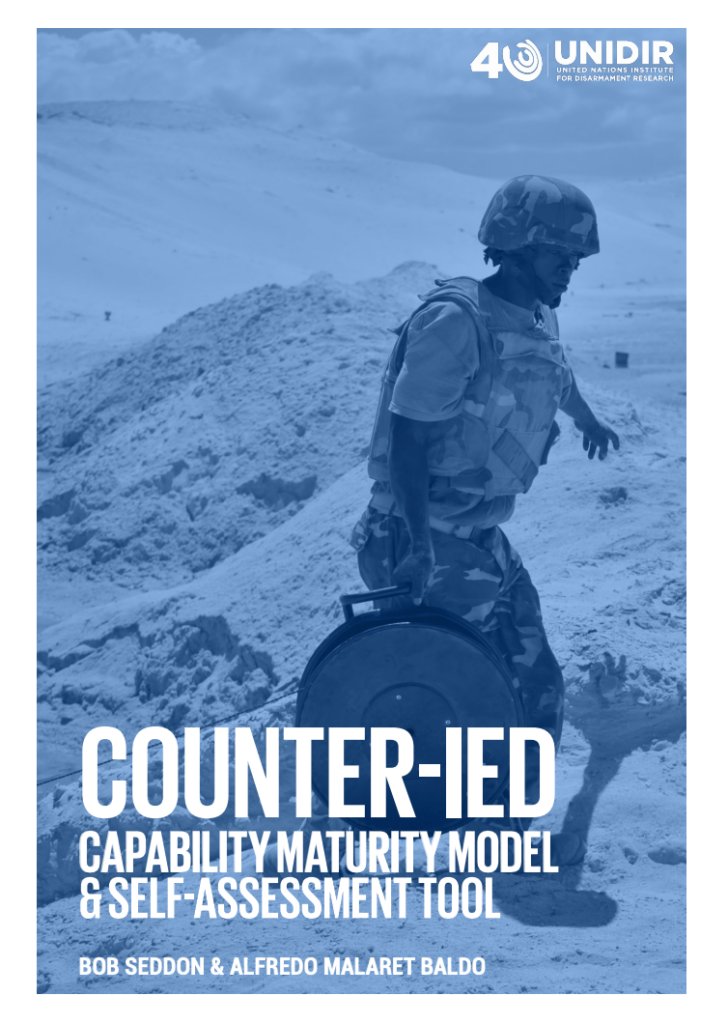In 2016, the United Nations Institute for Disarmament Research (UNIDIR) was mandated by the United Nations General Assembly to develop “a voluntary self-assessment tool to assist States in identifying gaps and challenges in their national regulation and preparedness regarding improvised explosive devices”. In response to this request, UNIDIR developed this Counter-IED Capability Maturity Model and Self-Assessment Tool.
This document is designed to assist States in the development of coherent national responses to the threat posed by IEDs. This document is structured in three broad parts: the first (sections 1-4) provides a brief introduction and sets the context of the problem. The second (section 5) provides the rationale for applying a capability maturity model (CMM) and describes the C-IED CMM. The third (section 6) describes the Self-Assessment Tool, which is based on the C-IED CMM.
Components of counter-IED capability are divided into two categories: upstream components, which are focused on those activities aimed at deterring or preventing IED events from taking place, and downstream components, which are associated with responding to a particular IED event or mitigating an IED event should it occur.
The general premise of the model is that the greater the maturity and effectiveness of upstream measures, the fewer downstream measures are required to counter the use of IEDs.
To access the Data Visualization Tool, click here:
Citation: Bob Seddon and Alfredo Malaret Baldo (2020) "Counter-IED Capability Maturity Model and Self-Assessment Tool", UNIDIR, Geneva. https://doi.org/10.37559/CAAP/20/ASC/04
INTERACTIVE USAGE MAP FOR THE C-IED CMM AND SELF-ASSESSMENT TOOL:
(n.b. Interactive map may take 10-20 seconds to load on first use)
Watch an expert panel discuss the applications of the Counter-IED tool:
Sponsor Organizations: France
